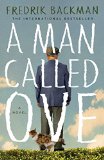Summary | Excerpt | Reading Guide | Reviews | Beyond the Book | Read-Alikes | Genres & Themes | Author Bio

This article relates to A Man Called Ove
A Man Called Ove inexorably links the man and his cherished Saab. Ove's first vehicle, inherited from his father at age 16, was a restored green 1949 Saab '92, a two-door coupe, the distinctive Swedish automobile manufacturer's first production car. Ove's devotion and brand loyalty to the company's Swedish roots is so steadfast that he ceases purchasing new cars after the General Motors acquisition, choosing instead to retain his dark blue 1998 Saab 9.5 Estate model.
IOne can argue that a Saab is not a car, but a wingless, non-flying airplane. The Svenska Aeroplan Aktiebolaget (Swedish Airplane Corporation) factory was built in 1938 to provide equipment for the Royal Swedish Air Force. Throughout World War II, the company manufactured military aircraft, bombers and fighters, transitioning to include civilian aircraft.
As demand decreased and leveled off, Saab decided to enter the automotive business. Saad AB was formed in 1945, touting the slogan: "Born from Jets." The Ursaab, built in two prototype models, was created as a concept car by aeronautical engineers with a unique, aerodynamic design that would have been at home on the pages of science fiction magazines.
 The Saab 92 with its innovative front-wheel drive and independent front suspension was launched in late December 1949. Only 700 cars were produced the following year, all painted in a dark green paint said to have been leftover from wartime airplane production. By 1952, four colors of exterior paint were offered. The entire body of these two cylinder engine vehicles was contoured from a single piece of sheet metal with windows and the two doors cut-out. The last 92 model was made in 1957. Fewer than 21,000 of these iconic and now highly collectible cars were manufactured in all; it is the only Saab to grace a postage stamp.
The Saab 92 with its innovative front-wheel drive and independent front suspension was launched in late December 1949. Only 700 cars were produced the following year, all painted in a dark green paint said to have been leftover from wartime airplane production. By 1952, four colors of exterior paint were offered. The entire body of these two cylinder engine vehicles was contoured from a single piece of sheet metal with windows and the two doors cut-out. The last 92 model was made in 1957. Fewer than 21,000 of these iconic and now highly collectible cars were manufactured in all; it is the only Saab to grace a postage stamp.
Saab expanded from the original two-door coupe to include a full range of vehicles: sedans, convertibles, station wagons and race cars. Several models have won the Insurance Institute for Highway Safety's Top Safety Pick. Saab's features have included seatbelts as standard issue from 1958, the first wraparound windshields, headlight washers and wipers, heated seats introduced in 1971 as a standard feature, and floor-mounted ignition, among a myriad others.
Demand for these quirky vehicles remained relatively low and profits modest for the parent corporation Saab Group that had expanded to become a multi-billion dollar giant in the aerospace and defense industry. To retain car market share and attract new consumers, the company needed to invest heavily in design and expansion. In 1990, GM shareholders acquired a 51% majority share of Saab cars and purchased the rest in 2000. Saab Group retained the truck and bus manufacturing divisions.
However, GM's vision of a reconfigured Saab as a competitor to the trendier, upscale BMW, was a costly failure. Saab cars went bankrupt and ceased operation in 2011. In 2013, under the aegis of National Electric Vehicle Sweden (NEVS), production started for the SAAB 9-3 Aero Sedan in Trollhättan, the birthplace of Saab cars. The rebirth is funded in part by the Chinese Quingbo Investment Company and cars are destined for the Chinese market. According to Saab's website: "The production rate in the factory will start at a very modest pace to ensure product quality and to make sure the supply chain functions. We offer the first production series of Saab 9-3 Aero Sedan cars to customers in Sweden and China."
Saab has an almost cult following among its aficionados. There are several books devoted to the cars' history; numerous clubs host rallies and events for owners and enthusiasts.
Picture of Saab 92 from The Saab Museum
Filed under Cultural Curiosities
![]() This "beyond the book article" relates to A Man Called Ove. It originally ran in July 2014 and has been updated for the
July 2014 edition.
Go to magazine.
This "beyond the book article" relates to A Man Called Ove. It originally ran in July 2014 and has been updated for the
July 2014 edition.
Go to magazine.
Your guide toexceptional books
BookBrowse seeks out and recommends the best in contemporary fiction and nonfiction—books that not only engage and entertain but also deepen our understanding of ourselves and the world around us.